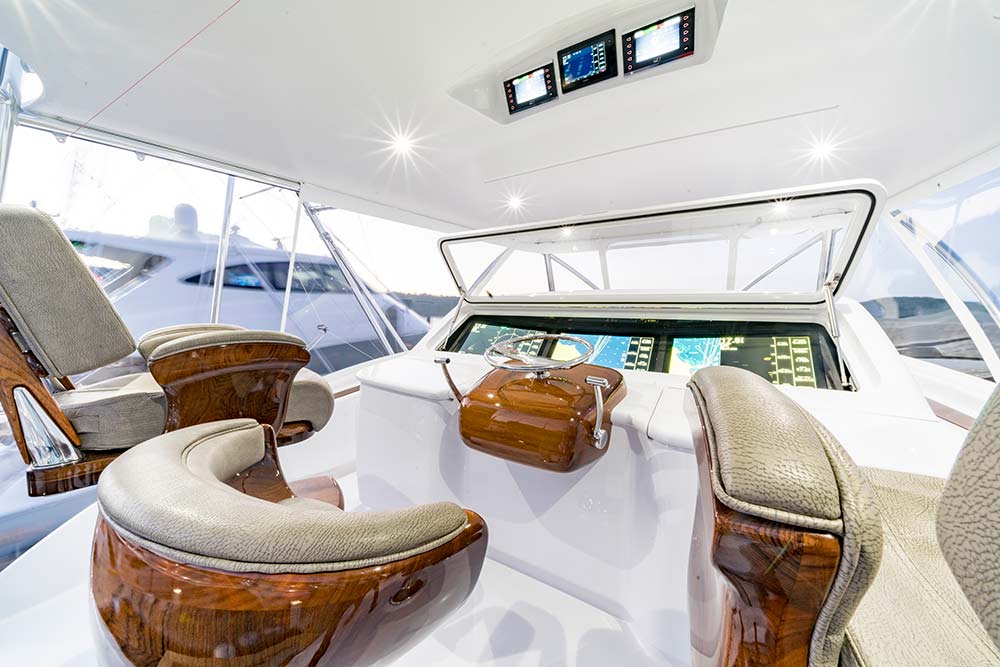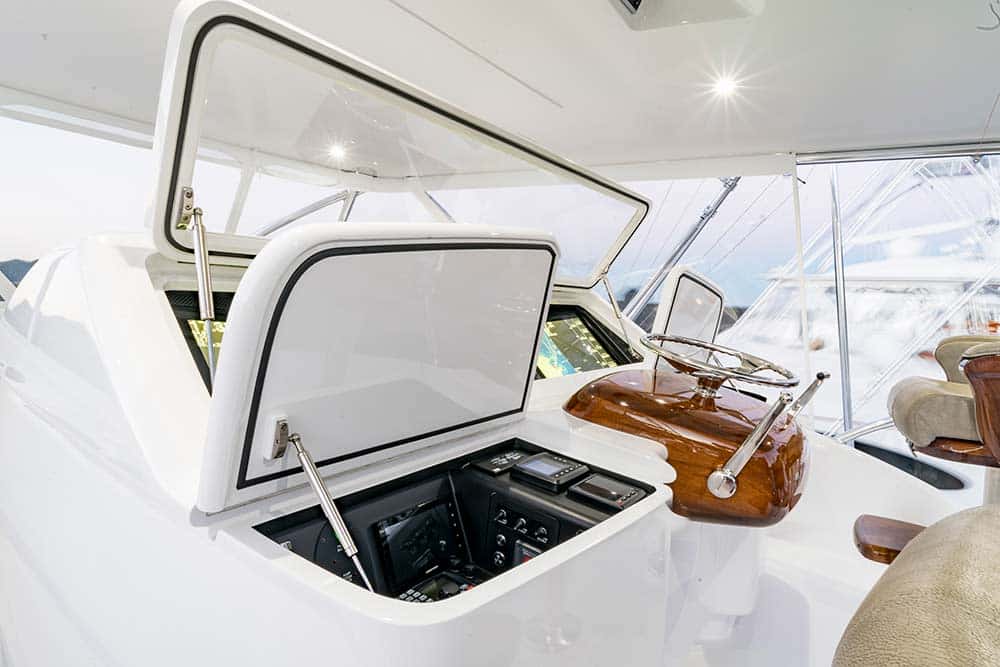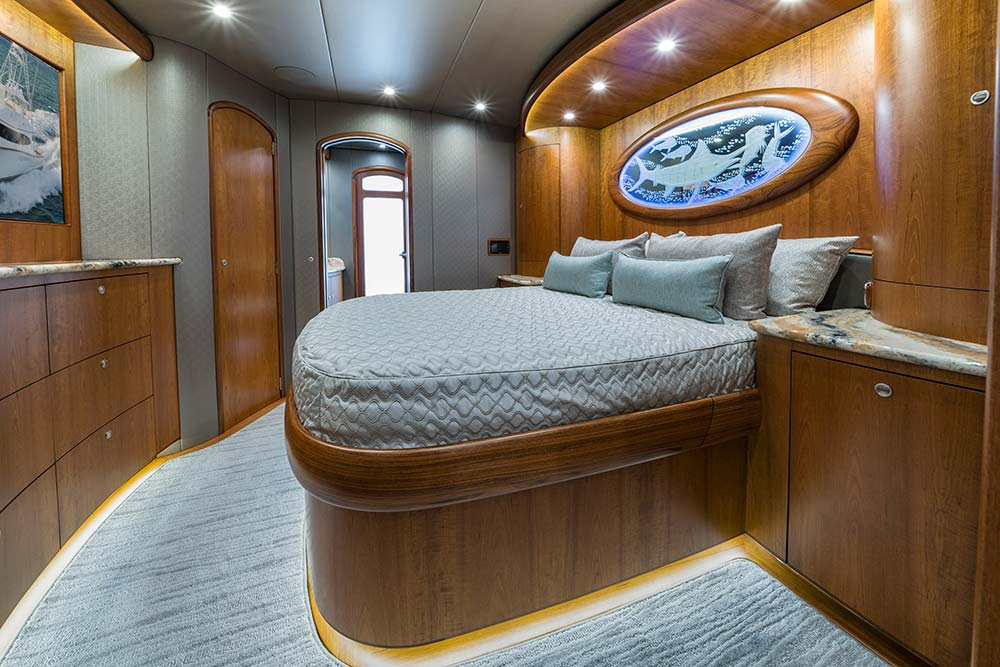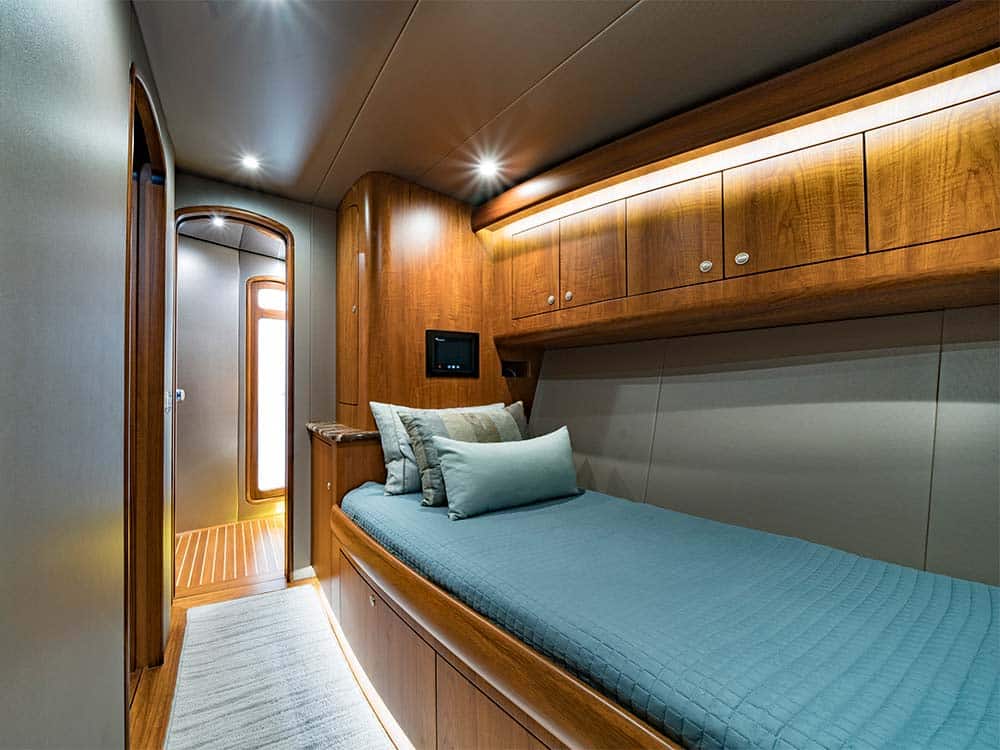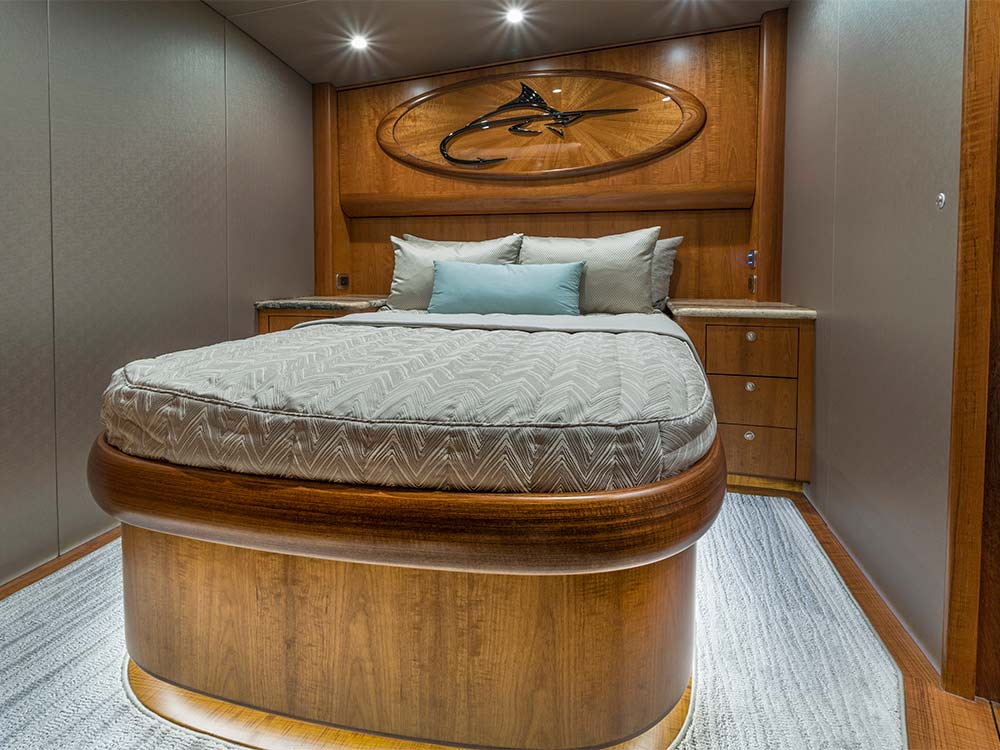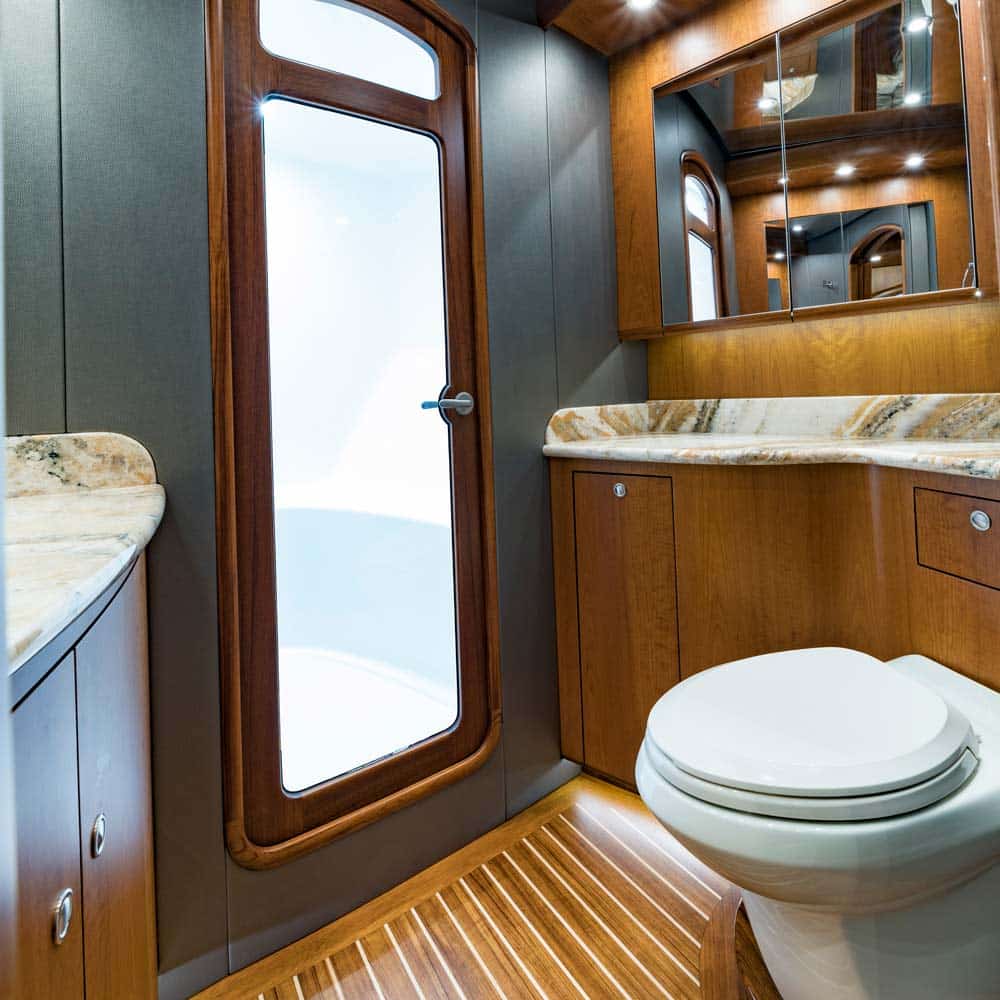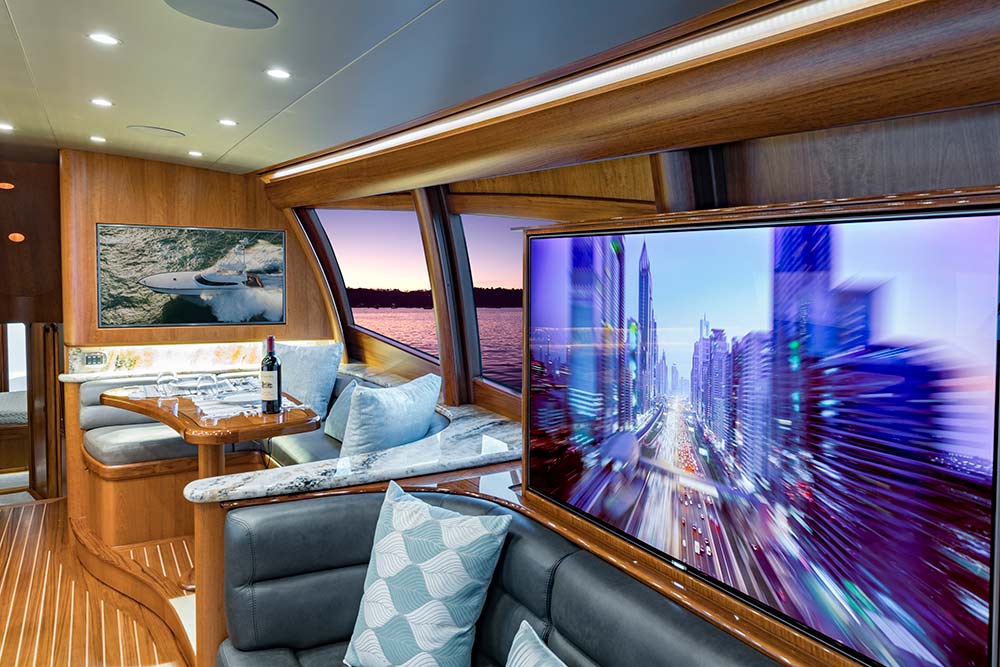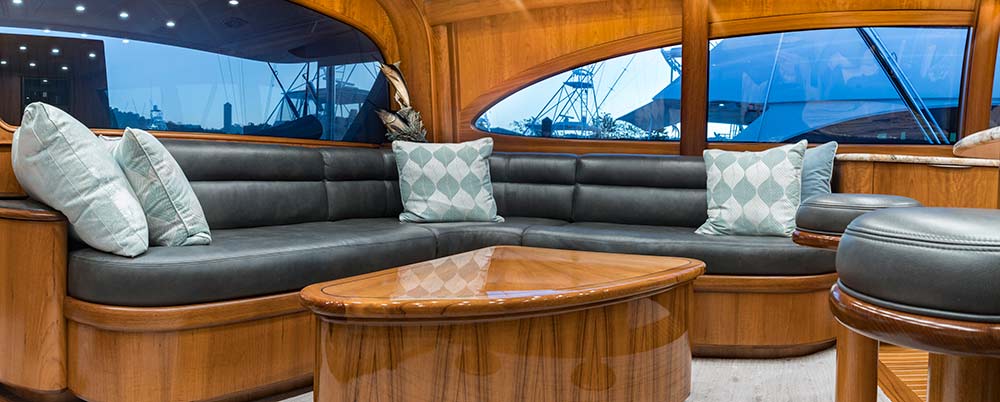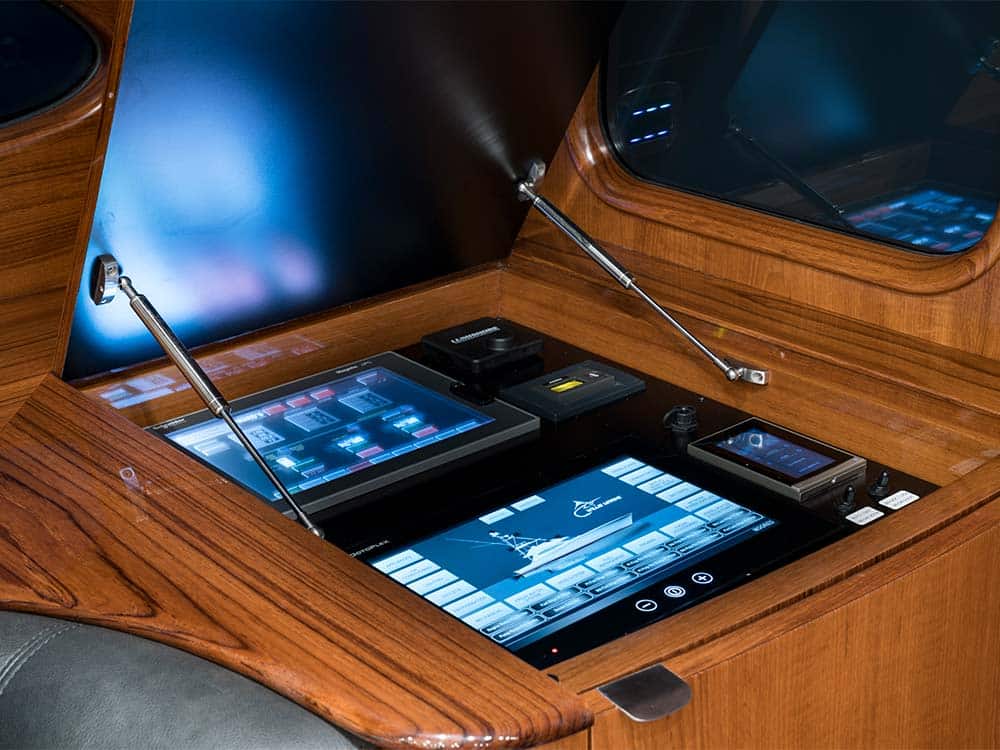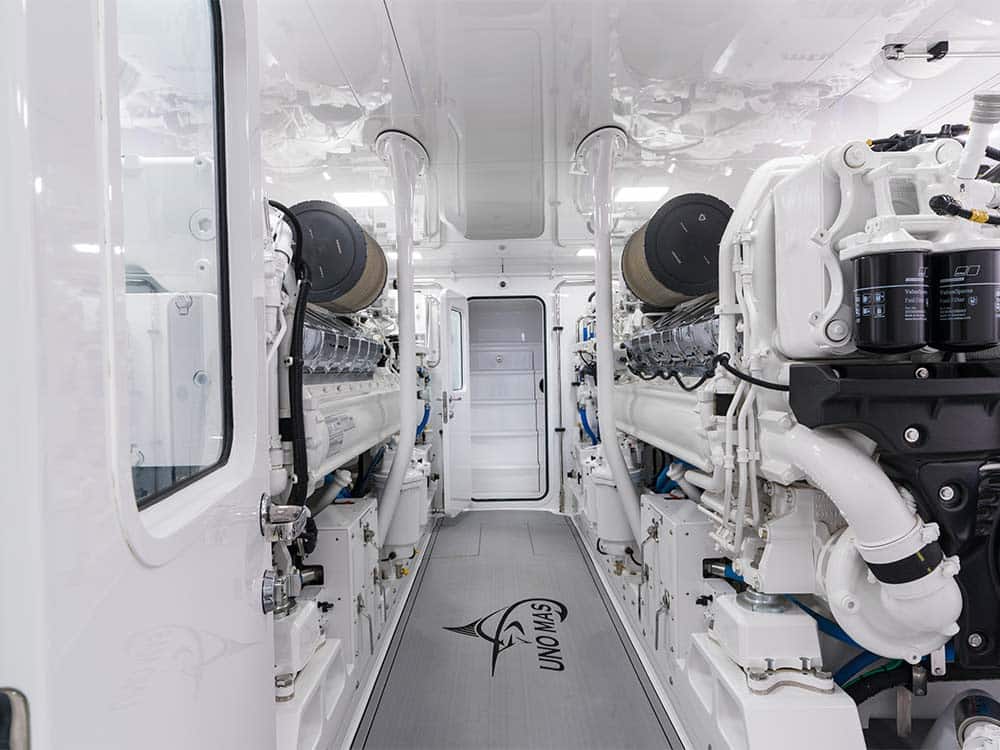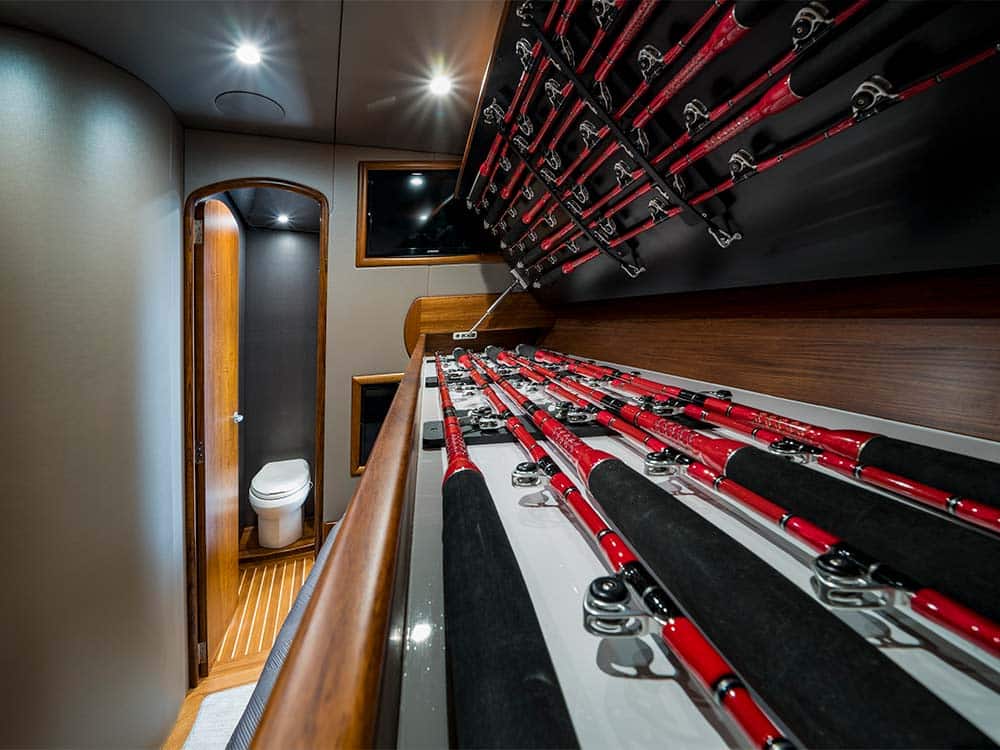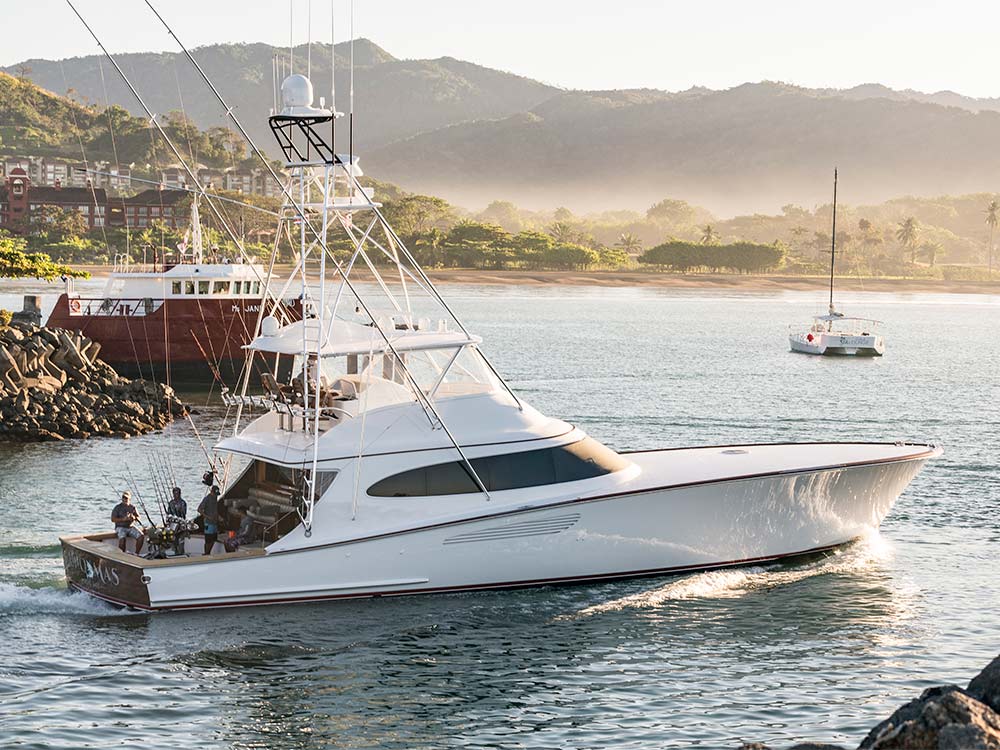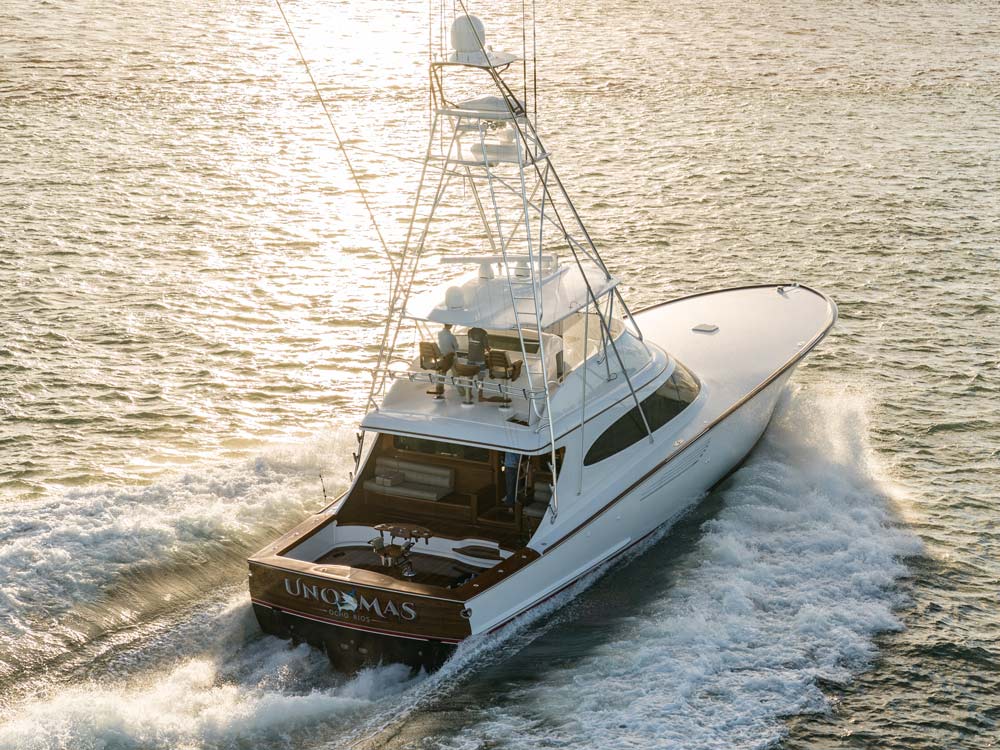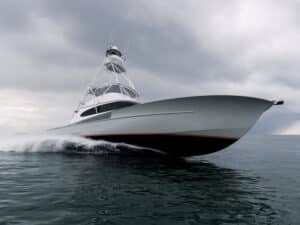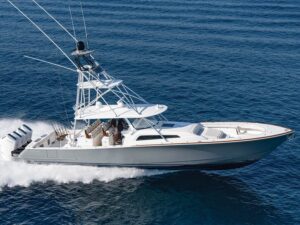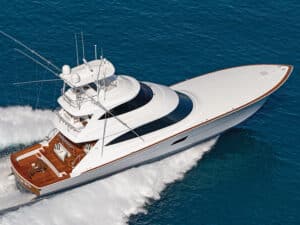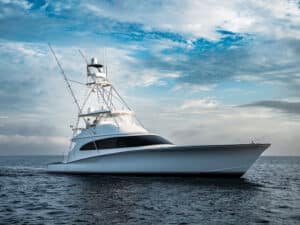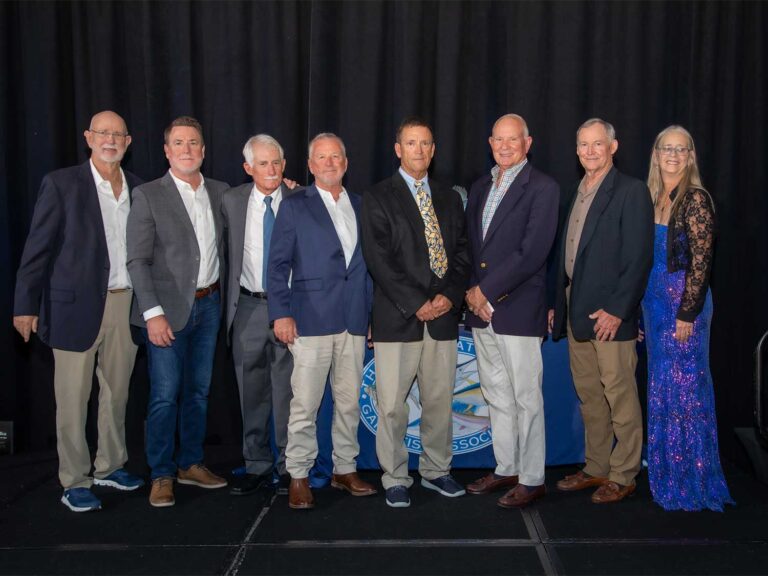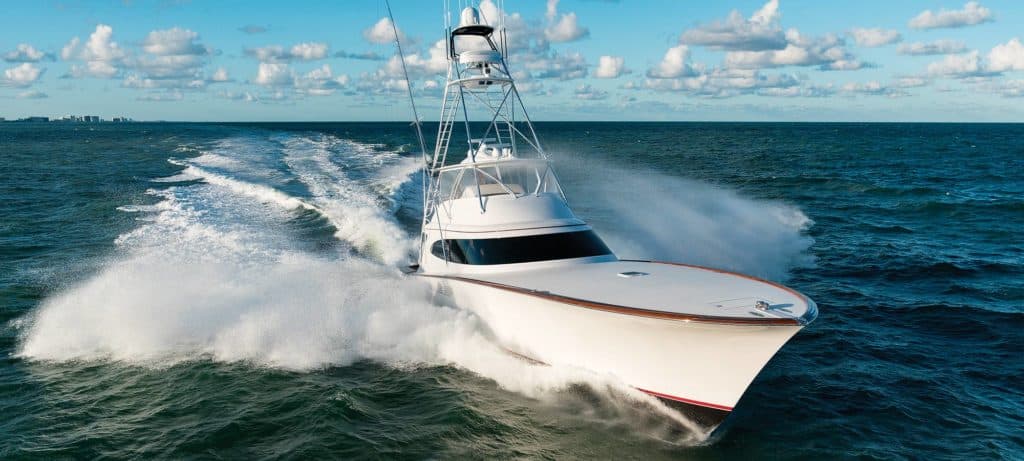
Combine a cutting-edge boatbuilder and a knowledgeable owner with considerable custom-boat experience and the result is Uno Mas, a technologically advanced masterpiece that performs even better than it looks. As I stepped aboard the latest build from Willis Marine prior to the start of the final leg of the 2018 Los Sueños Signature Triple Crown in Costa Rica, I looked forward to seeing just how well the stunning 77-footer would perform in the billfish-rich waters of the Pacific.
Mark Willis grew up fishing in Rhode Island. He earned an engineering degree before heading south to pursue a career at sea, plying the waters between Cape Hatteras, North Carolina, and Fort Pierce, Florida, and beyond as a charter fisherman. In 1982, he built a 30-footer for himself, which launched his career as a boatbuilder. Based in Stuart, Florida, for the past 30 years, Willis Marine has established itself as a top-tier custom outfit.
And to say that Uno Mas owner Brooks Smith is hands-on would be an understatement. In a world of professional captains, Smith has decided, at least for the near future, that he’s going to run his own rig as often as his busy schedule allows. He’s won several prestigious tournaments at the helm, as well as in the cockpit, so he knows what it takes to succeed on the water.
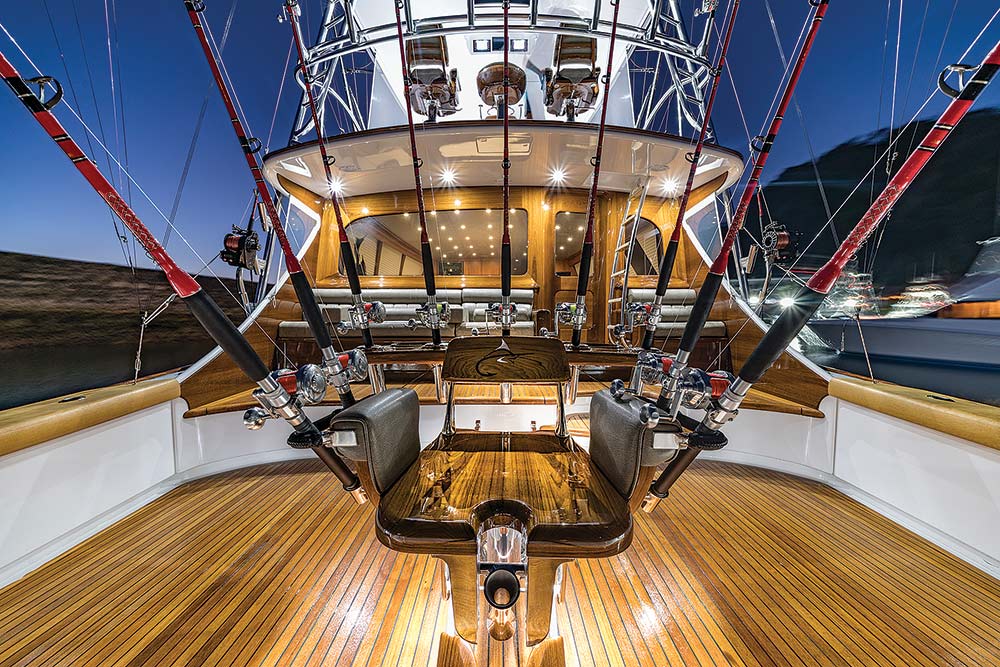
Cockpit and Helm
Boarding Uno Mas, it’s immediately clear that this is a pure fishing machine with plenty of beautiful custom touches. There’s nary a straight line to be found throughout the vessel. The edges of the mezzanine decks sweep and curve sensually, and even the standard Carolina-style transom fish box has a unique low-profile design. The obligatory mezzanine offers comfortable, air-conditioned seating, plus access to storage and refrigeration. The decks and covering boards are genuine teak, as are the transom and aft bulkhead; only the toe rail is a painted faux finish. The boat’s brightwork sports a unique epoxy and urethane finish, which perfectly mirrors the Release Marine Trillion Series fighting chair crowning the cockpit. It’s a sharp look.
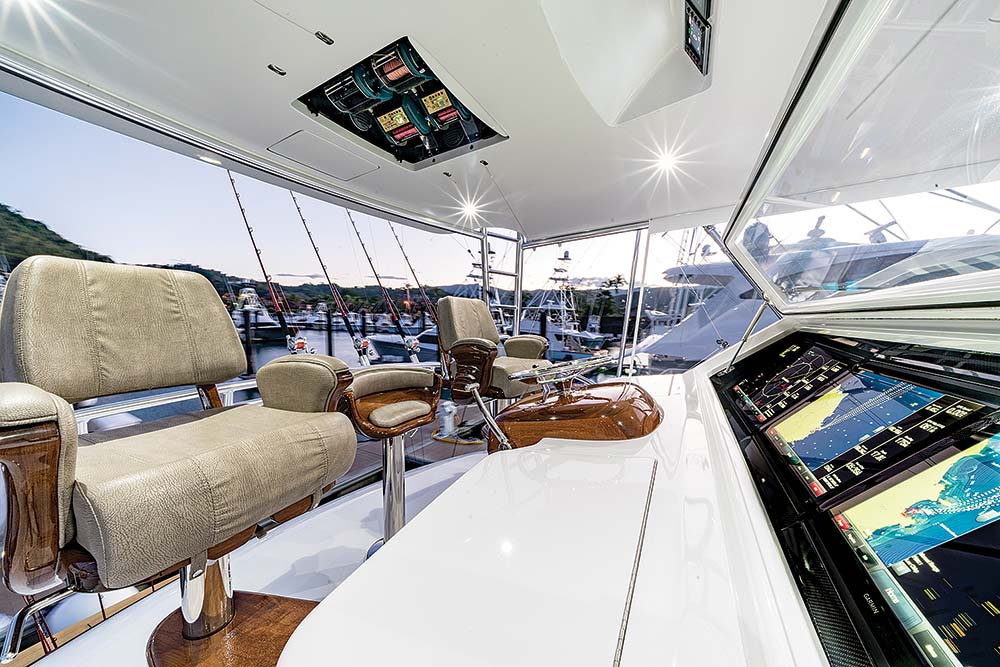
At the helm, the first noticeable difference is a padded teak half-bucket seat rather than the standard captain’s chair. With this setup, the captain has great visibility aft and can easily manipulate the teasers as he moves around the bridge. It’s another sign of a knowledgeable, boat-savvy owner. Three 24-inch Garmin displays line the helm under a protective acrylic spray cover, with controls for the Furuno searchlight sonar, VHFs, switches and other gear in electronics consoles flanking the teak helm pod. In the hardtop are two sets of Miya Epoch teaser reels as well as a drop-down containing another Garmin display, which allows the captain to keep tabs on the sounder or plotter while facing aft and watching the spread. A full tower from Palm Beach Towers allows for incredible visibility from above, and the tower welds are anodized rather than painted, another one of those meticulous details not overlooked by the owner and builder. The sides of the bridge swoop and curve forward. A pair of rod lockers are located on each side, each with its own air-actuated door that retracts inward then forward on a sliding track at the press of a button. The engineering and craftsmanship are truly incredible.
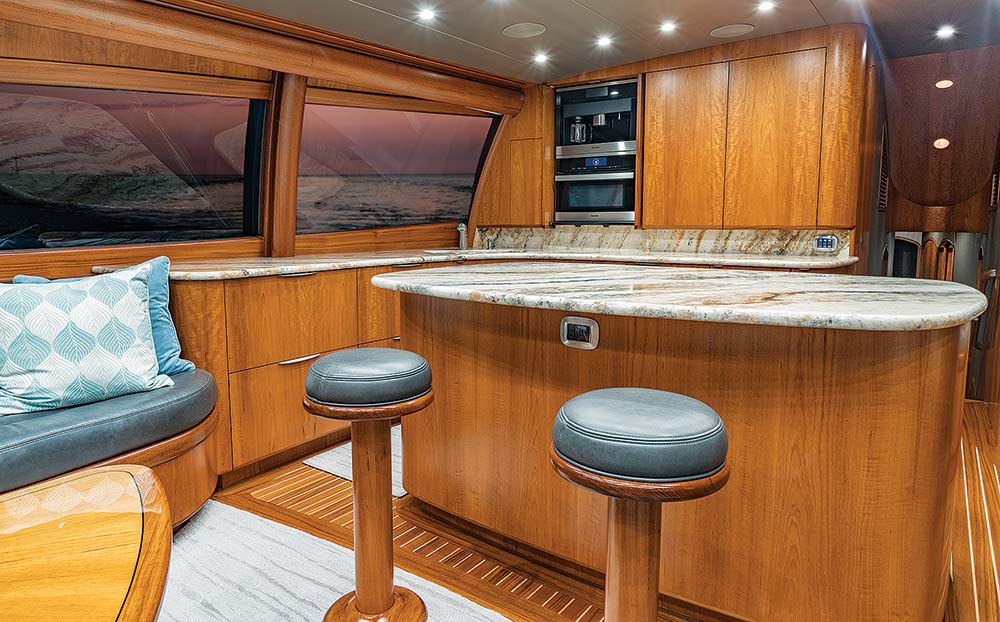
Interior
Stepping inside Uno Mas, the look is understated and classy, with tones of gray and cream and an incredible expanse of matched-grain fiddleback teak, blind-fastened and matte-finished to reduce fingerprinting and time spent cleaning up at the end of each day. The boat’s windows are another technological feat. Rather than being flat, they twist and curve in two dimensions as they follow the shape of the house forward. The aft bulkhead window utilizes blackout glass that turns opaque at the touch of a button.
Of note is the Ward’s power-transfer system, which seamlessly monitors and switches power from the generators to shore power as needed, controllable from a single touch pad in the salon. It’s a system usually found only aboard larger motoryachts, and it works amazingly well in managing the boat’s power needs.
To port is an L-shaped lounge with cavernous storage beneath each seat. Moving forward, the galley is to port, where a Wolf induction range is hidden beneath a Polystone countertop. “A lot of what we did in this boat, we learned from the aerospace industry,” Smith says. “Polystone only weighs about 1 pound per square foot, versus 30 pounds a square foot for stone, so it’s a place where we can save a lot of weight on the boat.” The galley drawers feature push-button magnetic locks to prevent them from popping open in rough seas. A retractable lure and teaser locker under the dinette to starboard is also a nice touch for additional storage.
Heading below, one thing that jumps out right away is the use of air-actuated pocket doors. With the air doors, there is never a danger of them banging around in heavy weather. If the air system should fail for any reason, they automatically retract to the open position. In keeping with the mantra of no straight lines, the door to the master stateroom is curved as well, another engineering feat from Willis.
The crew’s quarters, with separate engine-room access, is to starboard, while the spacious guest VIP is to port, with bunks and a Pullman-style fold-down sleeper. The master is complete with his-and-hers vanities, two showers and impressive headroom.
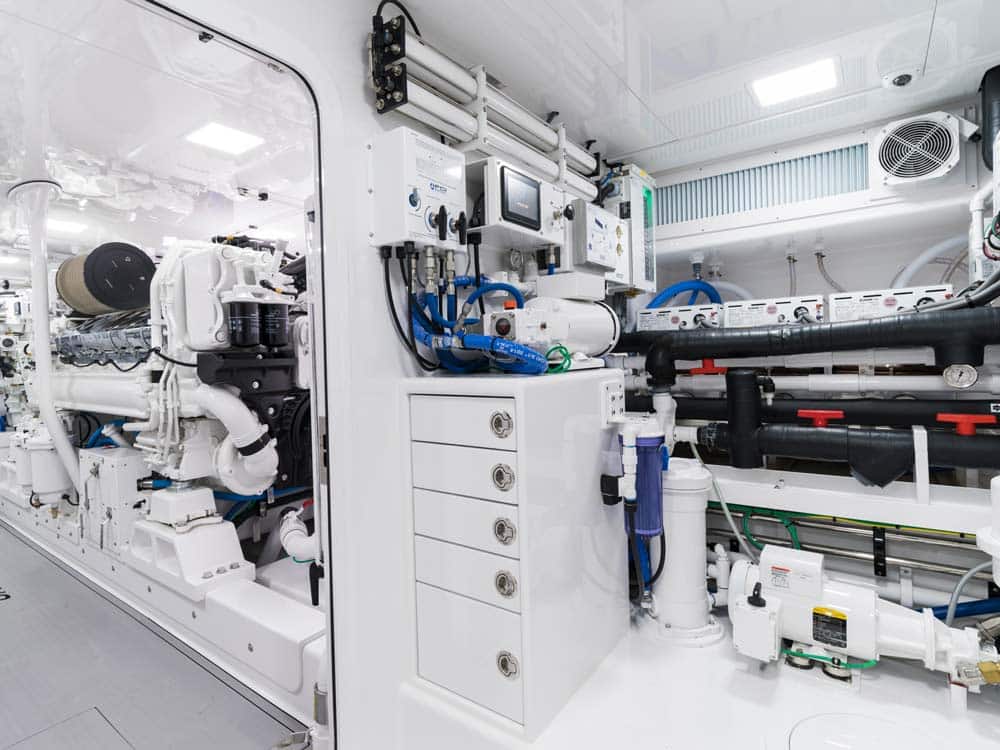
Engine Room
Entering the bright-white engine room from the crew’s quarters, it’s easy to see that Uno Mas was designed for ease of access and maintenance. A Willis touch: All hydraulic lines are polished stainless steel. The gleaming MTU Series 2000 M96L engines, each producing 2,600 hp, occupy the lion’s share of the space but are easily accessible, as are the two 30 kW Northern Lights generators and the associated pumps, compressors and other equipment.
Construction and Performance
As with all Willis boats, Uno Mas is built using traditional cold-molded construction techniques with a modern twist: From the hull up, it’s mostly carbon fiber and composites for strength and weight savings. A sleek hull form combined with wave-form rudders and running gear makes the boat a speedy one too, cruising effortlessly at 37 knots. At wide-open throttle, it tops out at 46 knots. The fuel management system allows the captain to maintain perfect trim, adjusting the 3,000 gallons among the boat’s three different tanks as needed.
During our day of fishing off Costa Rica, the bite had slowed for the fleet pre-fishing for the upcoming tournament. While others were catching one or two sails, we managed a half-dozen by lunchtime, then ran 20 miles and caught another handful later in the day to finish with 10 releases, among the best we heard around the docks later that day. The boat maneuvered beautifully, with no rudder vibration or deck shuddering even when backing hard on a doubleheader. Uno Mas is a deadly weapon in the right hands.
Willis says, “We started this build with a clean sheet of paper, and with the support of an owner who pushed us to work outside our comfort zone. I’m very proud of what we accomplished.” Uno Mas is an incredible example of modern boatbuilding, and the result of three and a half years of planning and execution among a team of passionate, talented professionals.
See our photo gallery of Uno Mas under construction here
